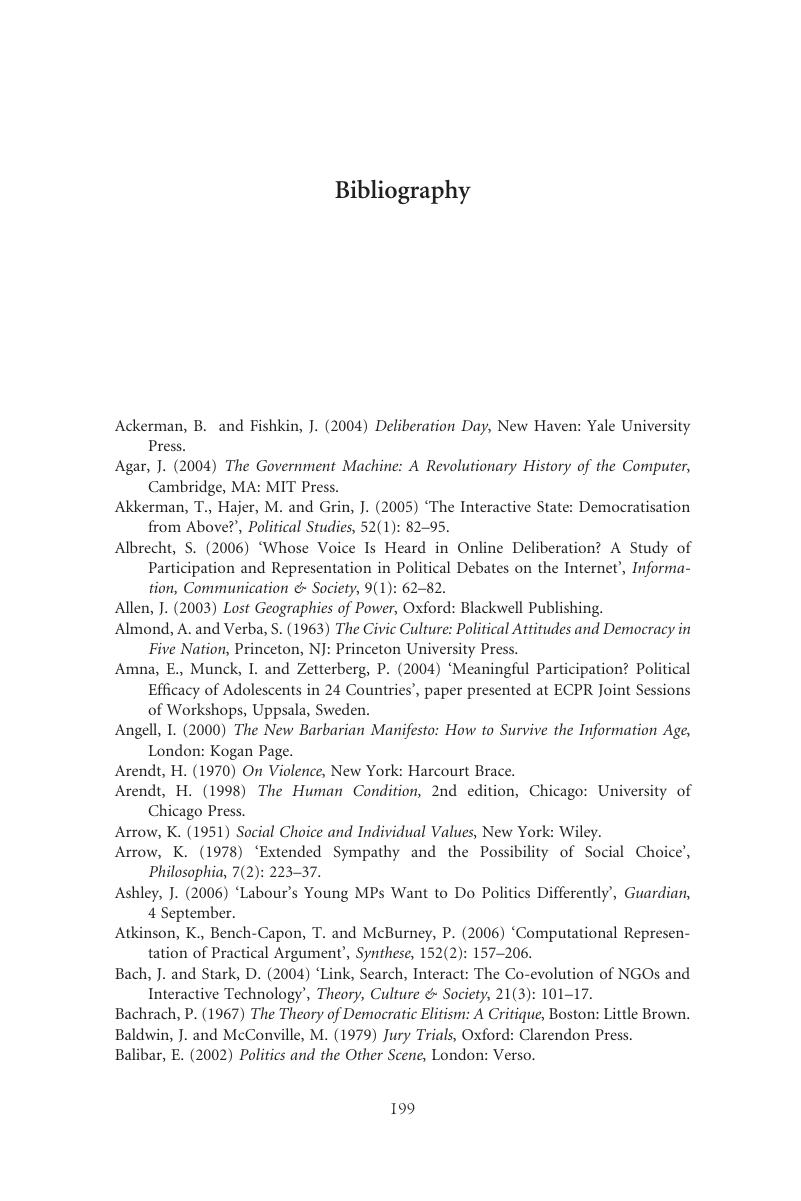Book contents
- Frontmatter
- Contents
- Acknowledgements
- Introduction: Anxiety and Optimism about Democracy
- 1 Democracy's Deliberative Deficit
- 2 A Crisis of Public Communication
- 3 From Indirect to Direct Representation
- 4 E-Democracy from Above
- 5 E-Democracy from Below
- 6 Shaping E-Democracy
- 7 Realising the Democratic Potential of the Internet
- Bibliography
- Index
- Titles in the Series
- References
Bibliography
Published online by Cambridge University Press: 05 June 2012
- Frontmatter
- Contents
- Acknowledgements
- Introduction: Anxiety and Optimism about Democracy
- 1 Democracy's Deliberative Deficit
- 2 A Crisis of Public Communication
- 3 From Indirect to Direct Representation
- 4 E-Democracy from Above
- 5 E-Democracy from Below
- 6 Shaping E-Democracy
- 7 Realising the Democratic Potential of the Internet
- Bibliography
- Index
- Titles in the Series
- References
Summary

- Type
- Chapter
- Information
- The Internet and Democratic CitizenshipTheory, Practice and Policy, pp. 199 - 216Publisher: Cambridge University PressPrint publication year: 2009



